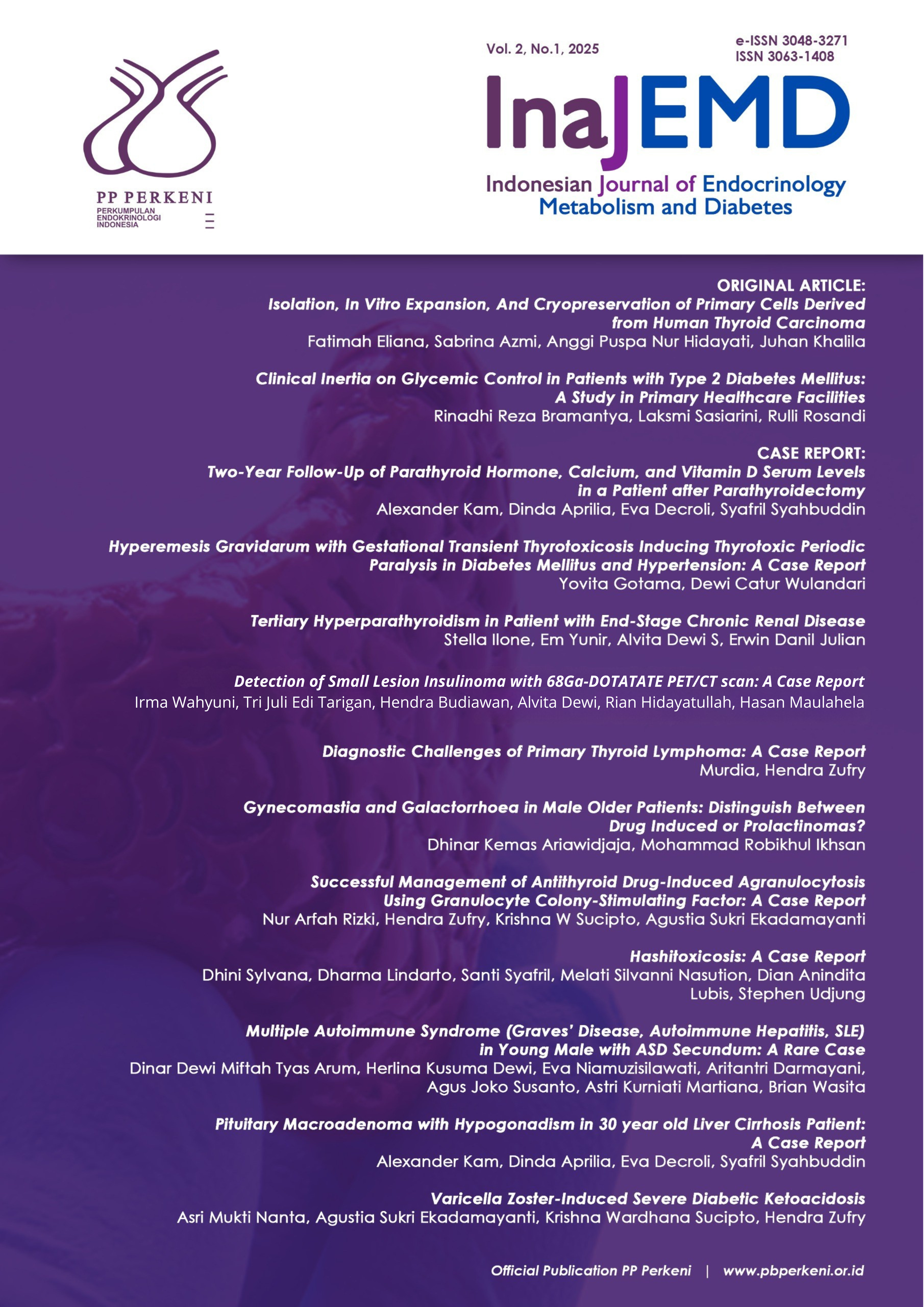Tertiary Hyperparathyroidism in Patient with End-Stage Chronic Renal Disease
Keywords:
Renal disease, hyperparathyroidism, calcium homeostasisAbstract
Mineral and bone disorder is frequently associated with chronic kidney disease (CKD) which starts early and worsens with renal progression. This condition depends on calcium and phosphate metabolism which will change parathyroid hormone (PTH) release. Understanding the pathophysiology of both secondary and tertiary hyperparathyroidism can reduce the development of its complications, such as renal osteodystrophy and cardiovascular disease. To describe a case of hypercalcemia patient caused by tertiary hyperparathyroidism with end-stage renal disease (ESRD) who underwent continuous ambulatory peritoneal dialysis (CAPD). A 50-years old patient was consulted for treatment of hyperparathyroidism due to mineral bone disease-related CKD. The patient has high levels of serum calcium, phosphate, and parathyroid hormone levels. She has already taken a phosphate binder and does CAPD 4 times daily. She underwent several radiology tests and knew that there was enlargement of her parathyroid glands. Based on that, she underwent parathyroidectomy with implantation. Until now, we still need to evaluate the changes in serum calcium, phosphate, and PTH level after the surgery. Hyperparathyroidism is a condition related to disturbance in calcium and phosphate homeostasis in CKD patients. Many factors contribute to the development of its progression. Early recognition and holistic treatment will be the most important thing to reduce the complication of hyperparathyroidism in CKD patients.
Downloads
Downloads
Published
Issue
Section
License
Copyright (c) 2025 InaJEMD - Indonesian Journal of Endocrinology Metabolism and Diabetes

This work is licensed under a Creative Commons Attribution-NonCommercial-NoDerivatives 4.0 International License.
Authors retain copyright and grant the Indonesian Journal of Endocrinology, Metabolism and Diabetes (InaJEMD) the right of first publication with the work simultaneously licensed under a Creative Commons Attribution-NonCommercial-NoDerivatives 4.0 International License (CC BY-NC-ND 4.0) that allows others to share the work with an acknowledgement of the work's authorship and initial publication in this journal.
© Indonesian Journal of Endocrinology, Metabolism and Diabetes (InaJEMD). Published by the Indonesian Society of Endocrinology (PERKENI).





